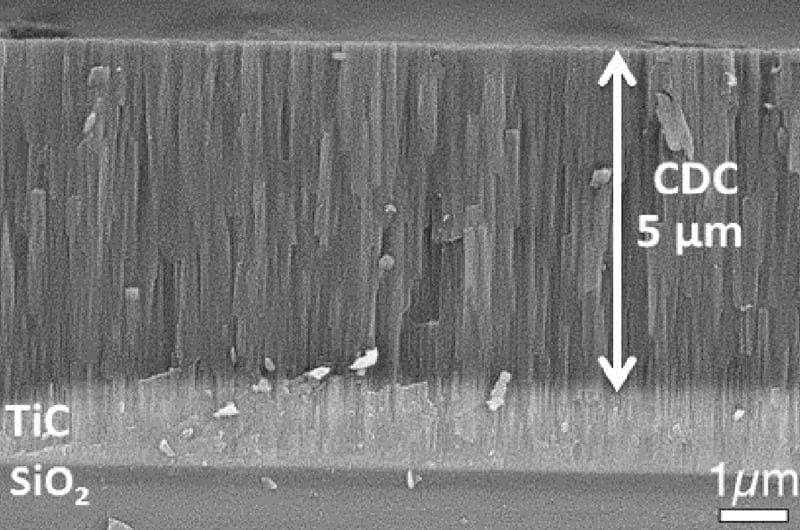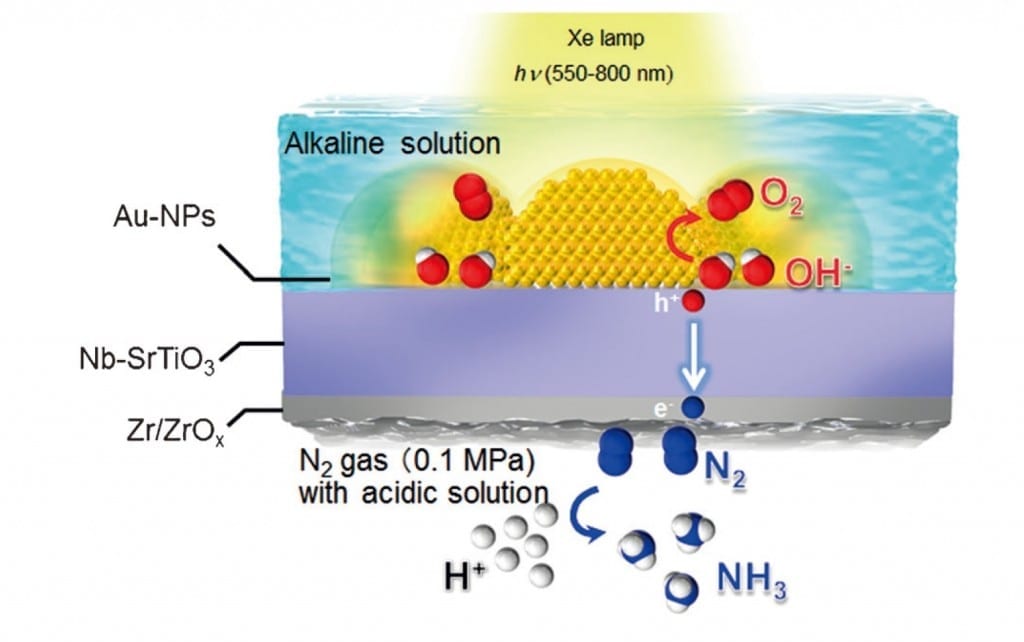
After more than half a decade of speculation, fabrication, modeling and testing, an international team of researchers led by Drexel University’s Yury Gogotsi, PhD , and Patrice Simon, PhD, of Paul Sabatier University in Toulouse, France, have confirmed that their process for making carbon films and micro-supercapacitors will allow microchips and their power sources to become one and the same.
The discovery, which was reported in a recent edition of the journal Science, is the culmination of years of collaborative research by the team who initially created the carbide-derived carbon film material for microsupercapacitors and published the concept paper in Science in 2010. Since then, their goal has been to show that it’s possible to physically couple the processing center of an electronic device — the microchip — with its energy source.
“This has taken us quite some time, but we set a lofty goal of not just making an energy storage device as small as a microchip — but actually making an energy storage device that is part of the microchip and to do it in a way that is easily integrated into current silicon chip manufacturing processes,” said Simon, who led the research under the aegis of the French research network on electrochemical energy storage (RS2E), a spin-off of Le Centre National de la Recherche Scientifique (CNRS) and France’s Ministry of Research. “With this achievement, the future is now wide open for chip and personal electronics manufacturers.”
It confirms a belief that the group has held since the materials were first fabricated — that these films are versatile enough to be seamlessly integrated into the systems that power silicon-based microchips that run devices from your laptop to your smart watch.
The challenges that the group faced in the development of the material were questions about its compatibility, its mechanical stability and durability for use on flexible substrates. With these answered, it opens up a myriad of possibilities for carbon films to work their way into silicon chips — including building microscale batteries on a chip.
“The place where most people will eventually notice the impact of this development is in the size of their personal electronic devices, their smart phones, fitbits89 and watches,” said Gogotsi, Distinguished University and Trustee Chair Professor in the Department of Materials Science Engineering who directs the A.J. Drexel Nanomaterials Institute in Drexel’s College of Engineering. “Even more importantly,” Gogotsi adds, “on-chip energy storage is needed to create the Internet of Things – the network of all kinds of physical objects ranging from vehicles and buildings to our clothes embedded with electronics, sensors, and network connectivity, which enables these objects to collect and exchange data. This work is an important step toward that future.”
Learn more: Research Reveals Carbon Films Can Give Microchips Energy Storage Capability
The Latest on: Microchips Energy Storage Capability
[google_news title=”” keyword=”Microchips Energy Storage Capability” num_posts=”10″ blurb_length=”0″ show_thumb=”left”]
via Google News
The Latest on: Microchips Energy Storage Capability
- Q1 2024 Portland General Electric Co Earnings Callon April 26, 2024 at 10:12 pm
Gregg Orrill; Analyst; UBS Equities Willard Grainger; Analyst; Mizuho Securities USA ...
- Is China stockpiling oil and other resources in case of future war?on April 25, 2024 at 1:39 am
Tankers in Dongying discharge Russian oil for China's reserves, exceeding US. Amid rising Russian imports post Ukraine invasion, China consumes 14M ba ...
- COLUMN-Is China stockpiling oil and other resources in case of future war?: Peter Appson April 24, 2024 at 6:03 pm
So far, neither Washington nor other Western states have moved to significantly cut China off from raw materials, although the U.S. has increasingly worked to strip Beijing of access to high-tech ...
- MIT Teams Secure NSF Grants for Sustainable Materials Researchon April 24, 2024 at 5:28 pm
Two teams led by MIT researchers were selected in December 2023 by the U.S. National Science Foundation (NSF) Convergence Accelerator, a part of the TIP Directorate, to receive awards of $5 million ...
- This Week in PowerBites: A Tale of Two Schottkys and Two Rare-Earth-Free Motorson April 23, 2024 at 11:01 am
PowerBites offers insights on two new rare earth-free electric-motor architectures, the latest power components, and news that California's grid is now spending significant ...
- SEALSQ Expands Protection of Luxury and Valuable Assets with Patented Advanced Digital Certification and NFT Technologyon April 23, 2024 at 8:00 am
Notably, SEALSQ’s VaultIC155 NFC secure element can be integrated into luxury items, enabling secure authentication when accessed by an NFC device. Furthermore, the technology grants brands the ...
- Don’t Miss the Boat! 7 Stocks That Can Change Your Life by 2030on April 23, 2024 at 4:55 am
InvestorPlace - Stock Market News, Stock Advice & Trading Tips Finding stocks to buy in today’s relatively overvalued and volatile ...
- Five hottest tech trends of 2024on April 23, 2024 at 2:31 am
Discover the hottest tech trends in 2024, from quantum computing and semiconductors, to advances in battery, space technology, and generative AI.
- Chip Industry Week In Reviewon April 19, 2024 at 12:01 am
TSMC, SK hynix HBM deal; Intel's high-NA EUV; big haul for Micron, Samsung; Cadence's new emulation, prototyping systems; architecting chips for HPC; Japan, China's IC output; funding for metrology; ...
- Nano-thin powerhouses: New ferroelectric capacitors set to transform techon April 18, 2024 at 11:00 am
Researchers from the McKelvey School of Engineering, Washington University may have overcome the shortcomings of ferroelectric capacitors.
via Bing News










